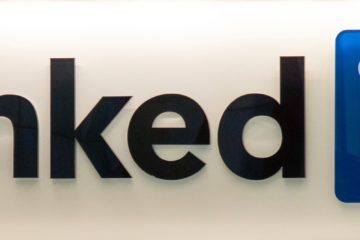So you would like to start out the resume with a bang that gets the hiring manager on the phone. Or, perhaps you can’t find out the way to start writing the resume from scratch?
Worry not; we’ll show you ways to try to do both.
See, the simplest resume opening is that the heading statement. That’s what can get the recruiters hooked.
But here’s the twist. To form the most impact, that heading – the resume summary or objective – has got to be the last item you write. So let’s specialize in the way to start writing a resume within the first place.
1. Save and open the original job description
How to find a resume? Before you begin writing your resume, come to the first job posting. Save it. Then, keep it open while writing your resume and canopy letter. Here’s why:
- The job description and your experience decide whether you’ll use a resume objective or a resume summary.
- The education section may enjoy specific coursework listed within the job ad.
- The job posting will determine which resume keywords are going to be important.
- It may produce other information or instructions necessary to writing your resume and canopy letter.
2. Prepare a resume format
Let me guess. You don’t have the skills to start out writing a resume because you started by putting your contact information on the resume and immediately hit a brick wall.
Here’s the second step you would like to require before you even start writing your resume. Find a resume outline first.
A resume outline is quite just a primary draft:
-
- It helps make sure you don’t forget any key sections.
- It allows you to see how you’ll structure your resume.
- It strengthens the accuracy of your resume.
According to our HR statistics report, recruiters spend 7 seconds scanning each resume on the average. So, a resume outline is crucial to supply the recruiter with everything they need to understand about their perfect candidate – you.
3. Choose the perfect format
For most job seekers the reverse-chronological resume format works best. It’s a one-size-fits-all deal. It highlights your work history by starting together with your last job and going backward from there.
Some might enjoy using the mixture resume format. It’s for people that want to point out their skills before jumping into their work experience. It’s a top resume format for career changers or high-level professionals. It’s also an honest resume format for job seekers with employment gaps.
4. Start writing the actual format (experienced section)
If the resume itself were a meal, the work history within the experience section would be the main dish. Starting together with your most up-to-date job, you move in reverse-chronological order from there. We’ll list your last job, dates within the position, city/state/country, and a bulleted list of tasks and achievements which you’ll curate to impress the hiring manager
If you’ve got no work experience, you would possibly be best off if you begin with the education section. If you’ve got little or no experience associated with the work to which you’re applying, then you’ll need to highlight the foremost relevant skills and achievements from past jobs or maybe accompany the mixture format mentioned before.
5. Move to your education section
Think the education section is there just to make your resume look longer? Think again. Most hiring managers require knowledge of your education on a resume. Many job listings also include a minimum education requirement, as well. It’s a key part of resume preparation. So, don’t leave education off when deciding the way to make the simplest resume. Include these things to form a well-rounded education entry as you’re producing a resume
- University Name & Location
- Degree & Major
- Awards, Honors, & GPA
Still in college and dealing with your degree? No worries! Follow an equivalent styling above, but add a line for “expected completion date.” If you would like to understand the way to start a resume for an adolescent or for top school students, style it an equivalent way, but skip your high school if you’ve got the education to list.
6. Finish it off with other sections
You’re off to an excellent start on your resume, so let’s keep that momentum going. After you’ve accomplished these tasks for beginning a resume from scratch, there are a couple of next steps on the way to continue through to the finish line:
Skills Section
The talents section often takes up little land on your resume, but its impact is great.
Additional sections
Additional sections on your resume may vary, but they definitely assist you to face out from the opposite applicants. Additional sections may include volunteer experience, certifications, hobbies and interests, knowledge of languages, and more.
Cover letter
Cover letters are where you get to require a much-needed break from all the technical speak and jargon and really let your human side shine.
7. Use a heading statement to give your resume a head start
“The Beginning is that the End is that the Beginning.”
If you followed all the steps above, not only did you begin writing a resume, you’re almost through with the entire thing! Now, time to end writing the resume and provide it a start.
The heading statement is going to be the primary thing recruiters start reading. it’s the primary impression, the make-or-break area for a recruiter. The heading statement is an intro for a resume. It comes within the sort of a resume summary or a resume objective.
Start a Resume with a Summary
Choose the resume summary if you seek an edge at employment during which you’ve got experience. The resume summary summarizes your position-related skills and qualifications.
Start a Resume with an Objective
Choose the resume objective if you’ve got no job experience or a minimum of no experience associated with the work you’re applying for.
Instead, you’ll highlight transferable skills from other areas and make the case that though you don’t have experience with this position, you are doing have experience relevant thereto.
Now, we’ve come full circle, where the top of the article is all about the start of your resume. And, would you check out that! By learning the way to start a resume with a bang, you’ve gone on and completed the whole thing.
That wasn’t so bad, was it?
SUMMARY
Well, what did you think? Hopefully, with the following pointers and advice for resume starters, you ought to be on your thanks to finishing a resume you’ll be pleased with.
- Preparing a resume – it’d seem dreadful to feature on more tasks at the start of a resume. However, starting a resume with an overview and selecting the right format will confirm you are doing it right.
- Beginning statement – Knowing the way to start a resume introduction may be a make-or-break kind of deal. It gives the primary impression, so you’ll want to craft one which will start with a bang and grab their attention.
- Experience & education – You understand the way to make a resume experience and education section, so now you’ve laid the inspiration for a robust resume which will surely get you interviews.



0 Comments